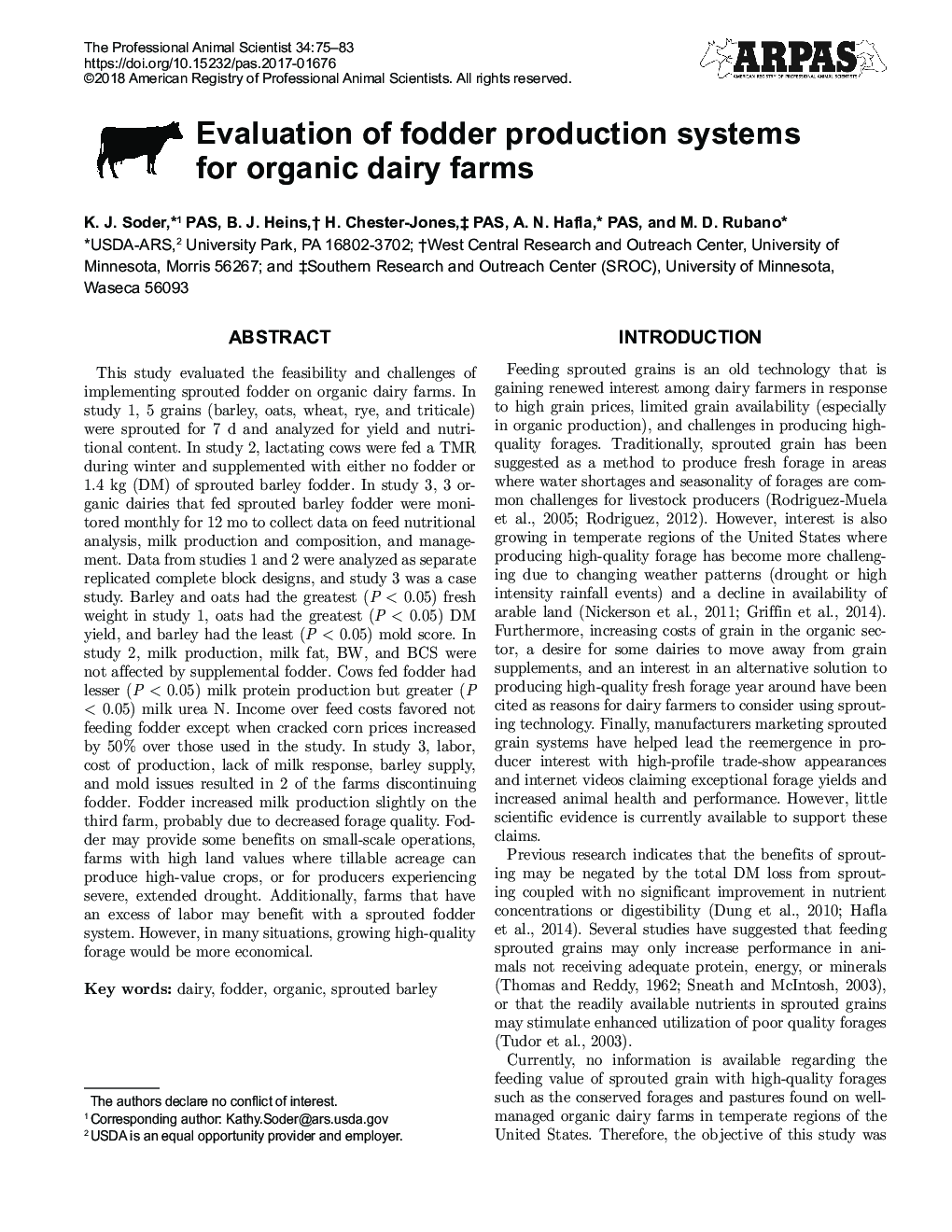| Article ID | Journal | Published Year | Pages | File Type |
|---|---|---|---|---|
| 8503698 | The Professional Animal Scientist | 2018 | 9 Pages |
Abstract
This study evaluated the feasibility and challenges of implementing sprouted fodder on organic dairy farms. In study 1, 5 grains (barley, oats, wheat, rye, and triticale) were sprouted for 7 d and analyzed for yield and nutritional content. In study 2, lactating cows were fed a TMR during winter and supplemented with either no fodder or 1.4 kg (DM) of sprouted barley fodder. In study 3, 3 organic dairies that fed sprouted barley fodder were monitored monthly for 12 mo to collect data on feed nutritional analysis, milk production and composition, and management. Data from studies 1 and 2 were analyzed as separate replicated complete block designs, and study 3 was a case study. Barley and oats had the greatest (P < 0.05) fresh weight in study 1, oats had the greatest (P < 0.05) DM yield, and barley had the least (P < 0.05) mold score. In study 2, milk production, milk fat, BW, and BCS were not affected by supplemental fodder. Cows fed fodder had lesser (P < 0.05) milk protein production but greater (P < 0.05) milk urea N. Income over feed costs favored not feeding fodder except when cracked corn prices increased by 50% over those used in the study. In study 3, labor, cost of production, lack of milk response, barley supply, and mold issues resulted in 2 of the farms discontinuing fodder. Fodder increased milk production slightly on the third farm, probably due to decreased forage quality. Fodder may provide some benefits on small-scale operations, farms with high land values where tillable acreage can produce high-value crops, or for producers experiencing severe, extended drought. Additionally, farms that have an excess of labor may benefit with a sprouted fodder system. However, in many situations, growing high-quality forage would be more economical.
Related Topics
Life Sciences
Agricultural and Biological Sciences
Animal Science and Zoology
Authors
K.J. PAS, B.J. Heins, H. PAS, A.N. PAS, M.D. Rubano,
